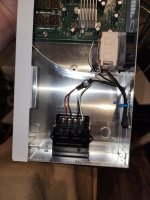You have many excellent answers here.
I don't agree with everything, but that's probably because we're all a bunch of geeks/experts. You'll get as many different answers as we are posters
I decided cost was "not a factor" because I wanted to prioritize IT security. So it was legitimate to spend hundreds of dollars on above-average network gear to achieve that.
I settled on Unifi. I also manage a team of network engineers at work, and boy is Ubiquity a brand that will... get a discussion going... :-D To some, it's utter crap. They work with datacenter-grade Cisco ACI gear, and obviously prosumer UniFi devices are nowhere near that. There is a lot of "very pro" stuff that UniFi just can't do. But trust me: you'll never need it. Like ... ever.
For me, it's been a very good solution. Using an UDM Pro as a controller has been a breeze, and learning how to configure things even as a non-network-engineer has been perfectly doable.
The end result is a relatively robust home network. We are 5 people, lots of gaming-PCs, two gaming consoles, TV sets with Ethernet/internet capability, and so forth.
I run four separate network segments: Server, Trusted, Guest and IoT. There is a bunch of lab-stuff and a NAS on the server segment, the Trusted network is our normal devices, and the IoT network is all the crap that I can't trust - like televisions, wifi bulbs, and Google devices.
Managing the segments and ensuring traffic is blocked or allowed between them is pretty straight forward in the UniFi UI. And managing individual ports is easy - including for the scenarios where (for one reason or another) I have added a small 5 port switch to the mix. They're like 30 dollars and will quickly allow you to separate traffic on different physical ports even if there is only a single uplink cable.
In total I am using the UDM, three APs, one "core" switch with PoE connected to the UDM, and three small 5-port units.
More expensive than just getting an 8 port switch? Sure. But you'll stop worrying about having that connected TV on the same net as your work laptop, or stop suffering from not having it connected at all because TV vendors can't be trusted.
I guess it's a matter of finally reaching the point where spending money on your local IT infrastructure is a priority. Many people happily spend lots of money on a sofa, a car, kitchen appliances, or a fancy lawnmower (connected to the 'net off course). Prioritizing your network is something you should allow yourself to do.
I don't agree with everything, but that's probably because we're all a bunch of geeks/experts. You'll get as many different answers as we are posters
I decided cost was "not a factor" because I wanted to prioritize IT security. So it was legitimate to spend hundreds of dollars on above-average network gear to achieve that.
I settled on Unifi. I also manage a team of network engineers at work, and boy is Ubiquity a brand that will... get a discussion going... :-D To some, it's utter crap. They work with datacenter-grade Cisco ACI gear, and obviously prosumer UniFi devices are nowhere near that. There is a lot of "very pro" stuff that UniFi just can't do. But trust me: you'll never need it. Like ... ever.
For me, it's been a very good solution. Using an UDM Pro as a controller has been a breeze, and learning how to configure things even as a non-network-engineer has been perfectly doable.
The end result is a relatively robust home network. We are 5 people, lots of gaming-PCs, two gaming consoles, TV sets with Ethernet/internet capability, and so forth.
I run four separate network segments: Server, Trusted, Guest and IoT. There is a bunch of lab-stuff and a NAS on the server segment, the Trusted network is our normal devices, and the IoT network is all the crap that I can't trust - like televisions, wifi bulbs, and Google devices.
Managing the segments and ensuring traffic is blocked or allowed between them is pretty straight forward in the UniFi UI. And managing individual ports is easy - including for the scenarios where (for one reason or another) I have added a small 5 port switch to the mix. They're like 30 dollars and will quickly allow you to separate traffic on different physical ports even if there is only a single uplink cable.
In total I am using the UDM, three APs, one "core" switch with PoE connected to the UDM, and three small 5-port units.
More expensive than just getting an 8 port switch? Sure. But you'll stop worrying about having that connected TV on the same net as your work laptop, or stop suffering from not having it connected at all because TV vendors can't be trusted.
I guess it's a matter of finally reaching the point where spending money on your local IT infrastructure is a priority. Many people happily spend lots of money on a sofa, a car, kitchen appliances, or a fancy lawnmower (connected to the 'net off course). Prioritizing your network is something you should allow yourself to do.


